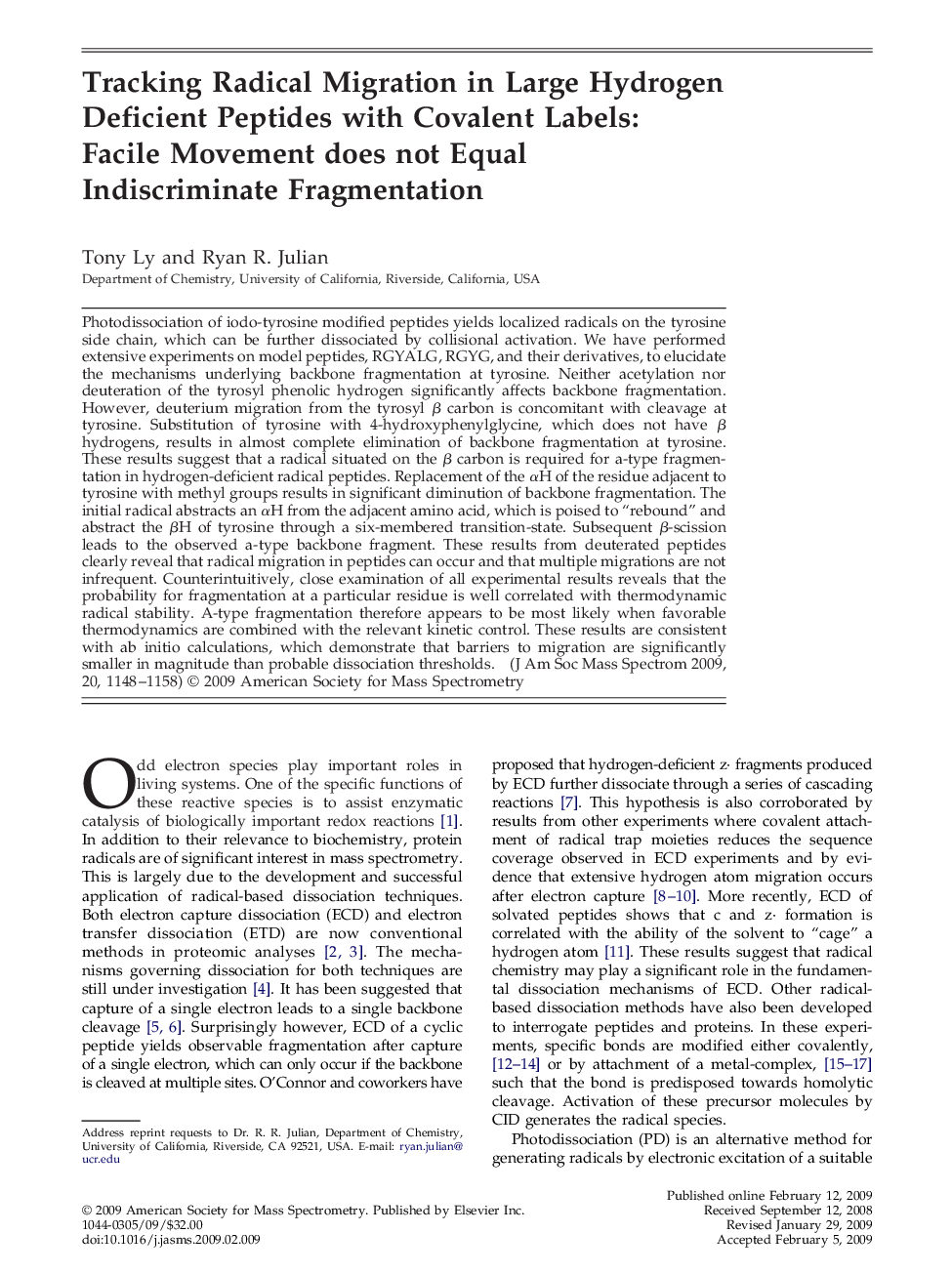| کد مقاله | کد نشریه | سال انتشار | مقاله انگلیسی | نسخه تمام متن |
|---|---|---|---|---|
| 1195291 | 964307 | 2009 | 11 صفحه PDF | دانلود رایگان |

Photodissociation of iodo-tyrosine modified peptides yields localized radicals on the tyrosine side chain, which can be further dissociated by collisional activation. We have performed extensive experiments on model peptides, RGYALG, RGYG, and their derivatives, to elucidate the mechanisms underlying backbone fragmentation at tyrosine. Neither acetylation nor deuteration of the tyrosyl phenolic hydrogen significantly affects backbone fragmentation. However, deuterium migration from the tyrosyl β carbon is concomitant with cleavage at tyrosine. Substitution of tyrosine with 4-hydroxyphenylglycine, which does not have β hydrogens, results in almost complete elimination of backbone fragmentation at tyrosine. These results suggest that a radical situated on the β carbon is required for a-type fragmentation in hydrogen-deficient radical peptides. Replacement of the αH of the residue adjacent to tyrosine with methyl groups results in significant diminution of backbone fragmentation. The initial radical abstracts an αH from the adjacent amino acid, which is poised to “rebound” and abstract the βH of tyrosine through a six-membered transition-state. Subsequent β-scission leads to the observed a-type backbone fragment. These results from deuterated peptides clearly reveal that radical migration in peptides can occur and that multiple migrations are not infrequent. Counterintuitively, close examination of all experimental results reveals that the probability for fragmentation at a particular residue is well correlated with thermodynamic radical stability. A-type fragmentation therefore appears to be most likely when favorable thermodynamics are combined with the relevant kinetic control. These results are consistent with ab initio calculations, which demonstrate that barriers to migration are significantly smaller in magnitude than probable dissociation thresholds.
Graphical AbstractRadical migration is shown to occur in large peptides and accounts for selective fragmentation at tyrosine residues and other sites.Figure optionsDownload high-quality image (28 K)Download as PowerPoint slide
Journal: Journal of the American Society for Mass Spectrometry - Volume 20, Issue 6, June 2009, Pages 1148–1158